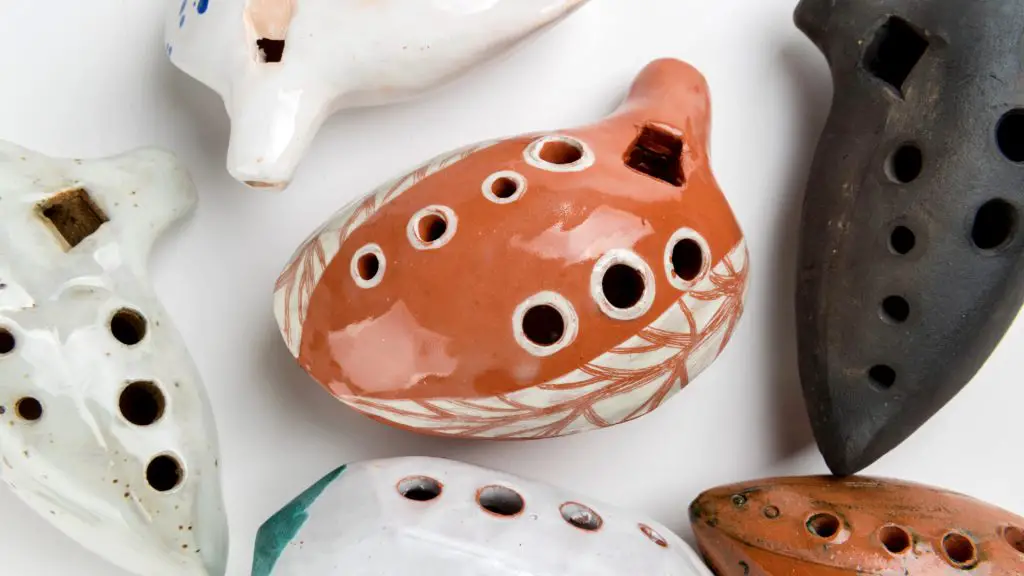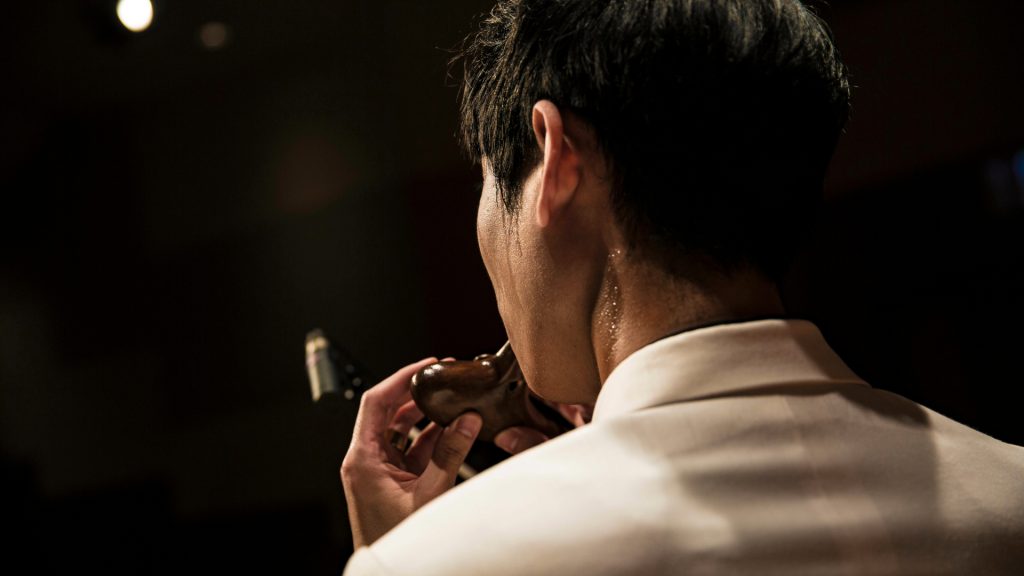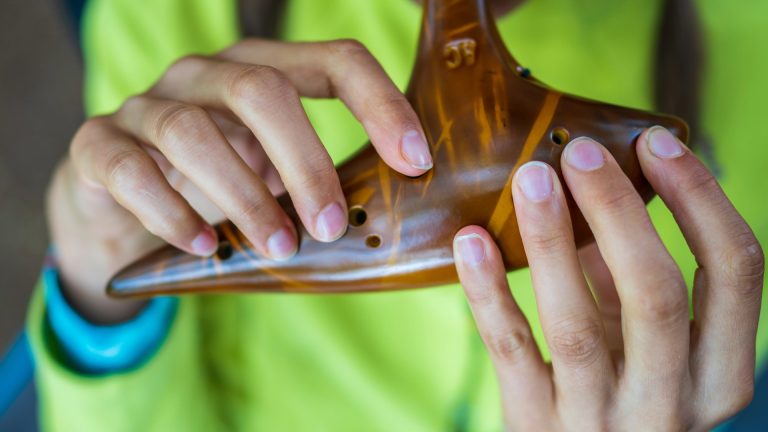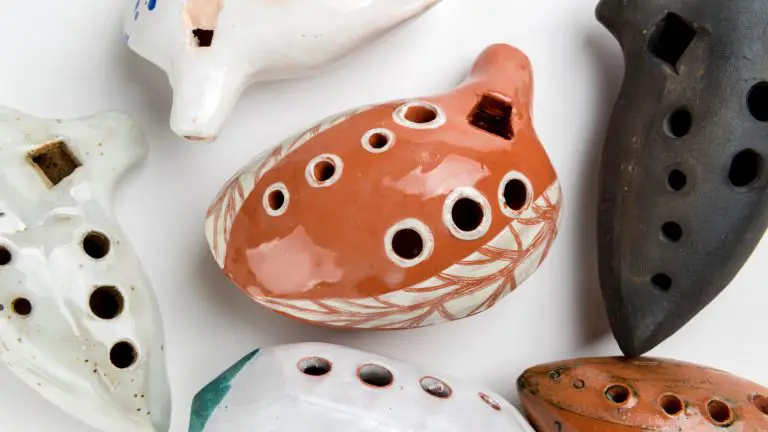How to Play the Ocarina: A Beginner’s Guide to Making Beautiful Music
Folkstrings.com is reader-supported. When you buy through links on our site, we may earn a small commission.
I’ve always been intrigued by the beautiful, ethereal sounds of the ocarina.
Yes, despite its fame from the iconic Nintendo game “The Legend of Zelda: Ocarina of Time,” the ocarina is indeed a real, tangible musical instrument with a history that predates its virtual depiction.
Its unique shape and the haunting quality of its tone have captured the interest of many music enthusiasts, including myself.
It’s fascinating to note how many people question its existence outside the realm of Hyrule, but I can assure you, the ocarina’s charm extends far beyond the digital world of Zelda.

Learning to play the ocarina is an enchanting experience. This ancient wind instrument, which typically comes in ceramic or plastic forms, can be picked up by beginners relatively quickly.
My journey with the ocarina began with understanding its anatomy and how to produce a sound by blowing into the mouthpiece, covering the holes to create different pitches.
Simple songs can be learned in a manner of hours, and as I progressed, I discovered a variety of playing techniques that enabled me to express myself more fully through the music.
Key Points…
- The ocarina is a legitimate instrument with a presence beyond its depiction in Zelda.
- Getting started with the ocarina involves learning its structure and how to produce notes.
- As skill develops, one can explore diverse playing techniques and build a personal repertoire.
Table of Contents
The Basics of the Ocarina
In this section, we’ll cover the different types of ocarinas and the proper way to hold them. With the right knowledge, you’ll soon be making music with this charming wind instrument.
Ocarina Types
When it comes to choosing an ocarina, you’ll find there are several types. Here’s a quick rundown:
- Four-Hole Ocarina: This is a great starter instrument. It’s capable of playing a full octave and is relatively easy to learn.
- Six-Hole Ocarina: Offers a wider range of notes than the four-hole and still maintains simplicity.
- Transverse Ocarina: Usually has more holes and is held horizontally. It’s ideal if you’re looking for more musical complexity.
- Plastic Ocarinas: Durable and often less expensive, making them suitable for beginners.
Everything you need to get started.
- Full Kit: Includes Ocarina, neck-strap, song book, protective bag and cleaning cloth.
- 12 Tones: 12 Tones Alto C with soft bass, high-pitched sound and a wide range of sounds, can make beautiful and natural sound,the best choice for music lovers、Beginner and Musician.
- Easy to Learn: You can master its playing skills in a short time
- Perfect for self-study, performance, and teaching.
Holding an Ocarina
Holding an ocarina correctly is key to producing the best sound. Whether you have a four-hole, six-hole, or a transverse ocarina, the basic grip is similar:
- Transverse Ocarina:
- Place my left hand near the mouthpiece with the thumb under and fingers on top.
- My right hand will be on the other end, thumb under and fingers on top.
- Make sure the holes are completely covered by my fingertips.
- Four-Hole or Six-Hole Ocarina:
- Hold the ocarina with both thumbs under the instrument.
- My index and middle fingers should be on the holes of the top side.
- For six-hole ocarinas, my ring fingers will also participate.
In either style, I keep my hold gentle but firm to maintain control without straining my fingers. This will allow me to play comfortably and make smooth transitions between notes.
Playing Techniques
When I play the ocarina, the essence of creating its sweet sound lies in two fundamental aspects: controlling my breath and mastering the instrument’s unique fingerings for various notes.
Breathing and Breath Control
Breath control is vital to playing the ocarina; it’s what gives the instrument its voice. I ensure my breath pressure is steady to produce a clear tone.
It’s common to start with too much pressure, so I focus on relaxed breathing. If I need to play sharp notes or a cord, I regulate my breath to adjust the pitch and volume.
I practice breathing exercises to develop a consistent airflow, as this impacts the sound of the ocarina.
Fingerings and Notes
The ocarina is held with both hands, with my thumbs covering the thumb holes at the bottom. Subholes and split holes allow for chromatic scale playing.
It’s important to use the correct fingerings to achieve the desired notes. Here’s a basic table for the fingerings of a standard Alto C ocarina:
| Note | Fingering |
|---|---|
| C | All holes covered |
| D | All but thumb hole on right hand |
| E | All but two bottom holes on right hand |
| F | All but bottom hole on right hand |
| G | All holes on right hand open |
| A | Only left hand holes covered |
| B | Only top three left hand holes covered |
| High C | Only top two left hand holes covered |
While ocarina playing, fingering combinations and transitioning between them should be smooth. This ensures a clean and articulate performance.
For voicing, my oral shape and throat positioning influence the timbre, complementing the breath control to shape the instrument’s sound.
Reading Ocarina Music
When I first began playing the ocarina, I learned that reading music is essential for precise playing, whether it’s through tabs or standard sheet music. Both methods have their uses, and understanding them can help you play anything from simple scales to complex compositions.
Understanding Tabs and Sheet Music
Ocarina tabs are a simplified way to read music, specifically tailored for the instrument. Tabs are visual representations where each circle represents an ocarina hole; filled or colored circles show that a hole should be covered. They’re especially helpful for beginners like me who might find standard musical notations intimidating.
On the other hand, reading sheet music involves understanding the staff, musical notations, and their timing. Sheet music is universal and not specific to the ocarina, so learning it opens up a whole world of musical pieces for me to explore.
To be proficient, I had to learn the symbols for pitch and duration. The staff consists of five lines and four spaces where notes sit or hang. The position of the note on the staff dictates the pitch.
When I play the ocarina, one important aspect to keep in mind is the octave range of my instrument, as some are tuned to different keys, and sheet music helps me adapt accordingly.
Playing Scales
Scales are the building blocks of music. The two scales that I commonly practice are the chromatic scale and the major scale.
- Chromatic Scale: This scale includes all twelve pitches available within an octave. When playing it on the ocarina, I ensure to include both natural and accidental (sharp or flat) notes, going in ascending and descending order.
| Note | Finger Position (Tab) |
|---|---|
| C | •••••• |
| C# / Db | ••••o• |
| D | ••••oo |
| D# / Eb | •••o•• |
| … | … |
| C (One Octave Higher) | oooooo |
- Major Scale: A major scale has a very specific pattern: starting from the root note, it follows the sequence of whole and half steps (W: Whole, H: Half). For instance, the C major scale (common for beginners) would be:
| Note | Finger Position (Tab) |
|---|---|
| C | •••••• |
| D | ••••oo |
| E | ••o••• |
| F | ••••o• |
| G | •••oo• |
| A | ••ooo• |
| B | •o•••o |
| C | oo•••o |
By practicing these scales, I not only improve my technical skill but also get better at reading both ocarina tabs and sheet music, making new melodies more accessible.
Advanced Techniques
In advancing my ocarina playing skills, I focus on articulation and expression to breathe life into melodies, while also employing memorization and improvisation techniques to enhance my musical experience and interpretation.
Articulation and Expression
I give special attention to the way I start and end notes to add character to the music. For instance:
- Staccato: I play notes sharply and detached to add rhythm.
- Legato: I connect the notes smoothly for a flowing melody.
Proper breathing techniques are crucial as well. I support each note with a controlled breath, ensuring that my articulation is both precise and expressive.

Memorization and Improvisation
My ability to memorize music improves with practice, enabling me to focus more on the expression rather than reading the notes. Here’s how I work on it:
- Start small: I memorize short sections of a melody and gradually piece them together.
- Use patterns: I identify repeating patterns and chord structures to simplify the memorization process.
When it comes to improvisation, experience is my guide. I allow myself the freedom to play around with the melody, exploring different musical ideas. This often leads to unique and personal renditions of songs on my ocarina.
Repertoire Building
When I started playing the ocarina, I found that building a repertoire was essential for my progression. It allowed me to gradually improve my skills while keeping the journey enjoyable. Here’s how I approached building my song list.
Simple Songs for Beginners
I began with Simple Songs for Beginners because straightforward melodies helped me get comfortable with the instrument. I focused on tunes that required minimal finger movements and that I was familiar with, which made the learning process smoother.
- “Mary Had a Little Lamb”: It’s a perfect song to start with because its simplicity does not overwhelm beginners. Note Sequence Finger Position E D C D E E E (See ocarina tablature) D D D E G G (See ocarina tablature) E D C D E E E (See ocarina tablature) E D D E D C (See ocarina tablature)
- Useful Tip: I practiced each note individually before trying to play the song.
Expanding Your Musical Library
As my confidence grew, I expanded my repertoire to more challenging tunes. This not only showcased my improvement but also kept my practice sessions exciting.
- Video Game Melodies: They often have a memorable tune that’s fun to play. For example, “Song of Time” from The Legend of Zelda series was a cherished addition to my collection. Notes for “Song of Time” Finger Position A F E F A E (See ocarina tablature)
- Incorporating different genres and styles was like adding various spices to my meals; it made my playing experience rich and varied. Playing in a group or for family members at home was rewarding and motivating.
In building my repertoire, I’ve learned that the effort I put into practicing each song pays off by bringing joy to myself and others. Whether I’m playing for children or just enjoying the music on my own, each new song enhances my ocarina journey.
Frequently Asked Questions
In my journey with the ocarina, I’ve gathered some key insights and tips that might help you on yours. From the basics to selecting your first songs, I’ll guide you through the common questions beginners have.
What are the basic steps to learn the ocarina for a beginner?
To start, familiarize yourself with the ocarina’s anatomy and learn how to hold it correctly. Then, work on producing a clear tone by controlling your breath. Once you’re consistent, move on to learning the scales and simple melodies.
Can you provide some simple songs to start with for ocarina novices?
“Mary Had a Little Lamb” and “Twinkle, Twinkle, Little Star” are great starting pieces. They have straightforward melodies that help you practice basic notes and transitions without overwhelming you.
Which fingerings should I use for different notes on a 6-hole ocarina?
For a 6-hole ocarina, your left hand will cover the top three holes, and your right hand will cover the bottom three. Each combination of covered and uncovered holes produces a different note. Start with all holes covered for the lowest note, and sequentially uncover the holes to ascendant notes.
What tips can help make learning the ocarina easier for new players?
Take time to practice your breathing, as good breath control is essential for a beautiful tone. Start with slow-paced songs to build up finger strength and accuracy. Finally, listen to a lot of ocarina music to familiarize your ear with the instrument’s sound.
What is the difference between playing a 4-hole ocarina and a 12-hole ocarina?
The 4-hole ocarina has a more limited range, typically up to 11 notes including sharps and flats, making it simpler for beginners. A 12-hole ocarina has a wider range and allows for more complex music, covering about an octave and a half.
Where might someone find instructional materials or books for playing the ocarina?
Instructional materials and songbooks for the ocarina are available at music stores, online retailers, and some can be downloaded from the internet. Look for beginner books with clear diagrams for fingering and simple songs to begin with.
Author Profile
-
Daniel Johnstone is an English writer with a love for stringed instruments from around the world.
He shares his love for these instruments through his writing for folkstrings.com, a website dedicated to all things related to folk string music.
Daniel's passion for music started at a young age, and he has since become an accomplished musician, playing guitar, cavaco, and recently, the harp.
His dedication to learning and sharing his knowledge of stringed instruments is evident in his insightful and engaging blog posts. Whether you're a seasoned musician or a beginner, Daniel's writing is sure to inspire and entertain you.
When he's not playing music or writing, you can find Daniel exploring new instruments and seeking out new sounds to share with his readers.
Latest entries
 AutoharpApril 4, 2024What Is the Autoharp Made Of: Exploring Its Materials and Craftsmanship
AutoharpApril 4, 2024What Is the Autoharp Made Of: Exploring Its Materials and Craftsmanship AutoharpApril 4, 2024Is Autoharp Easy to Play? Unveiling the Truth for Beginners
AutoharpApril 4, 2024Is Autoharp Easy to Play? Unveiling the Truth for Beginners AutoharpApril 4, 2024What Is an Autoharp Worth? Your Guide to Pricing and Value
AutoharpApril 4, 2024What Is an Autoharp Worth? Your Guide to Pricing and Value AutoharpApril 4, 2024Are Autoharp and Zither the Same Thing? Unraveling String Instrument Myths
AutoharpApril 4, 2024Are Autoharp and Zither the Same Thing? Unraveling String Instrument Myths
Affiliates:
This post may contain affiliate links that at no additional cost to you, the site may earn a small commission. We only recommend products we would use ourselves and all opinions expressed on this site are our own.
Accuracy Advice:
While we strive to provide up-to-date and accurate information, the content in this article may not reflect the most current research or medical guidelines. We encourage readers to do further research and consult with professionals for more personalized advice.
Our Recommendations:
The products and services mentioned in any of our articles are recommended based on our independent research and personal experience. We are not sponsored by any company. We aim to suggest products and services we believe are of high quality and could be beneficial to our readers.





